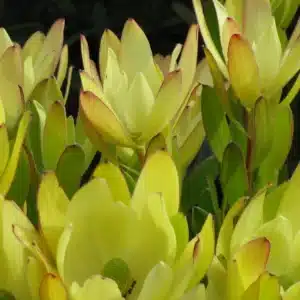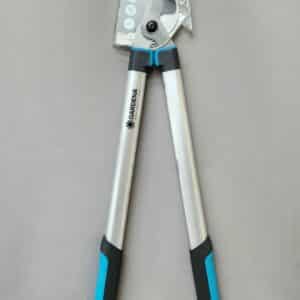A Modern Meadow Style Garden
DIY and how-to
A Modern Meadow Style Garden
The ‘new-style’ direction of gardening looks to the future but has its roots in the past, taking its inspiration from nature.The world’s wild flowers are rich in history, tradition and the romance of yesteryear, but are in constant danger of disappearing because of urban development, man’s ignorance and greed, and destruction of the environment. We need to take a fresh look at what is considered a beautiful garden and at plant communities that grow well together. The advantage of this new style of landscape is minimal use of water, no fertiliser, no spraying and a wildlife friendly garden.
New-wave style
This nature-inspired approach to gardening is becoming increasingly popular in housing estates, in retirement villages in rural areas and golf courses. Corporate enterprises are also changing from labour intensive lawns and flowerbeds to a more natural landscape, a style that is also becoming increasingly popular with homeowners.
The person most responsible for this ‘new-wave’ style of planting is Dutch landscaper Piet Oudolf. For the past three decades in both public and private gardens in many parts of the world, he has combined the basic elements of form, texture, light, colour and movement and transformed them into sculptural landscapes.
Although Oudolf uses colour freely and joyously, movement and shape are more important to him, and to illustrate his gardening philosophy of using plants that live well and die well he uses great sweeps of grasses in combination with easy-to-grow perennials with interesting form. In these gardens, plants complete their natural cycle without needing to be pruned or staked, and seed heads are left for interest and for the birds until early spring.
Modern meadow gardens
The original ornamental meadow garden took its inspiration from the red poppies, white daisies, mauve agrostemma and blue cornflowers that grew in cornfields. The focus of the modern meadow garden is on bold groupings of grasses and blocks of perennials randomly planted, with some annuals and ‘see-through’ plants, such as gaura, thalictrum and bronze fennel (Foeniculum cultivar ‘Rubrum’) to give a feeling of lightness.
A large area converted into a meadow garden will have space for mown paths, but if space is limited, plant a ‘mini’ meadow alongside a deck or bordering a driveway, and select grasses and flowers that are in proportion to the site.
Grasses with their differing growth habits of tassels and spikes, plumes and fountains play an important role, introducing movement, sound, texture and subtle colour. Choose clump-forming grasses that are not listed alien invasives and plant in large groups.
Provided they are non-invasive, there are flowers we can ‘borrow’ from other countries and combine with our flora to create a modern meadow style garden. Prairie is a French word for meadow, and many prairie perennials, such as penstemon, echinacea, gloriosa daisy and monarda (bee balm), are natural choices with grasses, where they attract butterflies, bees, insects and birds that act as pollinators.
For impact, plant flowers of different heights and shapes in large groups. For example combine the spires of penstemon and salvia with the flat flower heads of achillea and daises.
Colours can be muted with dusky pinks of sedum and echinacea, mauve scabious and agastache, lavender penstemon, steel blue eryngium and lavender-blue Russian sage (perovskia). Alternatively, they can be the bright fairground colours of red, blue and yellow. For example, a colour grouping of purple salvia and giant statice (Limonium perezii), apricot watsonias, orange and bronze day lilies and Salvia africa-lutea would be stunning among bronze grasses.
A meadow garden would not be complete without daisies, and there is a wide choice of heights and colours found in felicia, euryops, Shasta daisy, bidens, osteospermum, gaillardia, ursinia, cosmos, sunflower and Michaelmas daisy.
Be sure to include flowers with attractive seed heads, such as sea holly (eryngium), scabious, echinacea, rudbeckia, love-in-a-mist (Nigella damascena), sunflower, brunsvigia, Boophane disticha and globe thistle (echinops).
African grassland garden
You may wish to use only indigenous plants and grasses, and what a wonderful choice there is of grasses and flowers! Indigenous grasses include heart-seed love grass (Eragrostis capensis), red top grass (Melinis nerviglumis), Aristida junciformis with its honey-coloured seed heads, and Chlorophytum saundersiae with its starry white flowers and narrow green leaves.
There are orange aloes to light up the grassland in winter, and tall orange lion’s ear (Leonotis leonurus), pincushions, crocosmias and chasmanthe cooled down by the bright blue flowers of the hedgehog sage (Pycnostachys urticifolia) and blue and indigo agapanthus in spring and summer. A softer colour grouping could consist of white dietes, pink sage bush (Orthosiphon labiatus), the indigenous wild foxglove, (Ceratotheca triloba) and mauve scabious, all planted in large groups.
Low-growing blue Cape forget-me-not (Anchusa capensis), yellow and orange bulbine and gazania are useful for filling gaps, and seasonal interest can be supplied with bulbs of galtonia, eucomis, gladioli species, watsonia, dierama and bulbinella.
Meadow making tips
- Autumn is a good time to establish a meadow garden, when growth is not so rampant and plants can become established before winter.
- In small gardens, use shorter grasses and flowers.
- Choose an area that receives six to eight hours of sunshine a day.
- Soil should not be too rich.
- Only the top few centimetres of the soil should be loosened, as deep digging will bring any buried weed seed to the surface.
- Keep it simple by restricting the variety of plant material.
- Choose plants that thrive in your local conditions and repeat plantings in bold groupings.
- Buy plants from reputable nurseries.
- Choose clump-forming grasses.
- Some weeding and tidying will be necessary from time to time.
You might also like
Shop online
-
PLASTIC SQUARE BLACK/GREEN POT 7CM X15CM
- R49.99
- Select options This product has multiple variants. The options may be chosen on the product page Learn More
-
PRUNING LOPPER
- R799.99
- Add to cart Learn More
-
- Sale!
MED ADULT 15KG
- Original price was: R1,599.99.R1,279.99Current price is: R1,279.99.
- Add to cart Learn More




